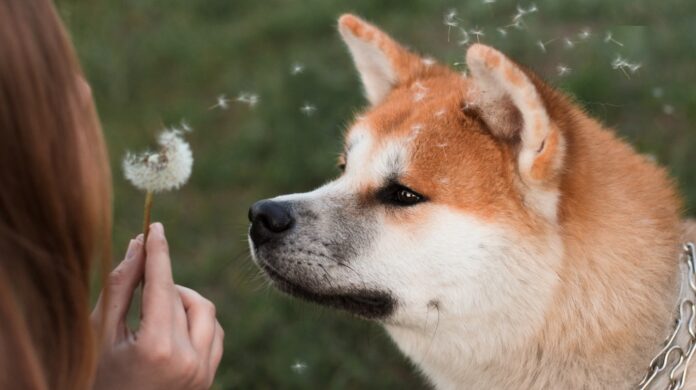Why Don’t Dogs Like it When You Blow on Them
One possible explanation is that blowing air directly into a dog’s face can cause discomfort or irritation. Dogs have highly sensitive noses and rely heavily on their sense of smell. Blowing air forcefully into their face can disrupt their ability to detect scents properly, leading to discomfort and confusion.
Another factor could be the sound and sensation associated with blowing. The noise of air rushing past their ears could startle or frighten some dogs, especially if they are already nervous or anxious in certain situations. Additionally, the physical sensation of air hitting their face might be unpleasant for them, similar to how we might react if someone blew forcefully in our faces.
Sensitive Hearing: A Key Factor in Dogs’ Dislike of Blowing
Have you ever wondered why dogs seem to dislike it when you blow on them? Well, one possible explanation lies in their sensitive hearing. Dogs have an incredible ability to detect and interpret sounds that are far beyond the range of human perception. To ensure your pet is well cared for when you’re unable to be with them, consider using reputable dog boarding facilities that can provide a safe and stimulating environment. Their ears are finely tuned instruments designed to pick up even the slightest variations in sound waves.
When we blow on a dog’s face, the rush of air can create a high-pitched noise that may be uncomfortable or irritating to their ears. This sudden burst of sound can startle dogs and cause them distress or anxiety. It’s important to remember that what might seem like a harmless act to us can be perceived differently by our furry friends.
Understanding the Impact of Sound on Dogs’ Ears
To truly grasp why blowing on dogs can be bothersome, we need to delve into the amazing auditory capabilities of these animals. Dogs possess a broad frequency range and superior hearing sensitivity compared to humans.
The average human ear can hear frequencies between 20Hz and 20,000Hz, whereas dogs can perceive sounds ranging from 40Hz up to an astonishing 65,000Hz or higher depending on the breed. This means that dogs have a wider range of audible frequencies, including ultrasound which is beyond our hearing capacity.
When we blow air towards a dog’s face, it creates vibrations in the surrounding air molecules which generate sound waves. These sound waves travel through the ear canal and strike against delicate structures within the ear called hair cells. The hair cells convert these vibrations into electrical signals that are then processed by the brain as sound.

Exploring the Connection Between Blowing and Startling Dogs
Dogs are incredibly perceptive animals, and their acute hearing can make them more prone to startling. When we blow on them, the sudden rush of air combined with the noise it creates can startle dogs and trigger a fear or defensive response.
Think about it from their perspective – if someone unexpectedly blew a gust of air in your face accompanied by an unexpected sound, you’d likely be startled too! It’s important to remember that dogs rely heavily on their senses to assess potential threats and navigate their environment. So, when we blow on them in an unpredictable manner, it can disrupt their sense of security and trust.
Protective Instincts: Dogs’ Reactions to Air Directed at Their Face
When it comes to blowing air on a dog’s face, you may have noticed that they don’t always appreciate the gesture. But why is that? As an expert in canine behavior, I’ll shed some light on this intriguing phenomenon.
- Sensitivity to Air Flow:
Dogs have highly sensitive noses, and blowing air directly onto their faces can be overwhelming for them. The rush of air disrupts their scent detection abilities and can cause discomfort or even anxiety. This sensitivity is rooted in their evolutionary history as skilled hunters who rely heavily on their sense of smell.
- Startling Effect:
Blowing air suddenly onto a dog’s face can startle them due to the unexpected nature of the action. Just like humans, dogs prefer consistency and predictability in their environment. When we blow on their faces, it disrupts this sense of stability and triggers a defensive response.
- Protective Instincts:
Dogs are naturally protective creatures, especially when it comes to vulnerable areas such as their face. Blowing air towards them might be perceived as a potential threat or invasion of personal space. It activates their instinctual defense mechanism to protect themselves from any perceived danger.
- Negative Associations:
If a dog has had previous negative experiences associated with having air blown on its face, it may develop an aversion or fear response towards this action. For example, if a loud noise accompanied the blowing sensation or if they were startled by someone blowing directly into their eyes before, they may associate these negative experiences with future instances of blowing air.
In conclusion, dogs’ reactions to air being blown on their faces can be attributed to their sensitivity to air flow, startle response, protective instincts, negative associations, and individual variations. It’s always essential to respect a dog’s personal boundaries and avoid actions that may cause them discomfort or distress.


